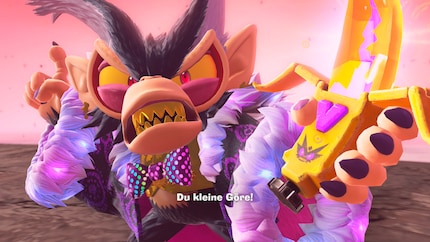
Review
"Cronos: The New Dawn" tested: a terrifying, almost perfect horror masterpiece
by Domagoj Belancic

Forget Mario Kart World – Donkey Kong Bananza’s the new must-have game for all Nintendo fans. The 3D platformer has set new standards.
The premise is simple: swept up in a vortex, the mine where Donkey Kong works is sent underground. There, he meets a talking rock who turns into the young Pauline. You may know her as the first woman to kidnap Donkey Kong’s grandfather Cranky in the arcade game, or as the talented singer from New Donk City in Super Mario Odyssey.
The duo set off for the planet’s core, which according to legend will grant them their greatest wishes. While DK dreams of bananas, Pauline wants to get back home. This is how their journey to unknown depths begins.
The main story offers plenty of variety throughout the 15 to 20 hours. I regularly find myself wanting to «just quickly do one more task before going to bed». And the hours fly by before I can finally put away my Switch 2 and Bananza with it.
On the journey to the planet’s core, you have to collect Banandium Gems. Not only are they the game’s main collectible, every five bananas grant you an ability point that makes DK stronger, faster or more robust. Banandium Gems are hidden throughout the levels. Sometimes you acquire them by winning a boss fight, sometimes through a special skill passage and sometimes they’re just buried somewhere underground.
This is definitely reminiscent of the moons from Super Mario Odyssey, but it’s the ability upgrades that make it more motivating. In addition to the Banandium Gems, you also collect fossils and gold. The fossils serve as currency for clothes on each level. The clothes grant you bonuses, such as faster movement in water, health regeneration in Bananza mode and reduced damage from enemy attacks.
Gold is a currency for the underground inhabitants. They offer their services and want a little of the gold you collect everywhere on your adventure in return. Their services include barrel cannons – which serve as shortcuts – and removing indestructible materials so you can unlock small skill levels.
Gold is also so versatile that you can just rip it off a wall and throw it at stone. This makes it explode, clearing your path. Logical, right? In Donkey Kong Bananza, the terrain types react differently to each other. For example, you can throw ice onto lava to create a walkable stone floor. Or remove slime with sand so it can no longer cause damage. The different effects of the terrain allow for even more puzzles and challenges. Ingenious.
While searching for Banandium Gems and passages to the deeper levels, you constantly destroy sections of the levels. Before playing, this is the gameplay element that worried me the most.
I wasn’t sure if a game where you constantly destroy your surroundings would be fun in the long run. More than 20 hours later, I can say that Nintendo’s done it again. Pulverising your environment’s not only fun, it also allows you to approach the levels in a completely different way. At the touch of a button, you can scan your surroundings for buried treasure and hidden doors to skill-based levels. So, you bash your way around – and the resulting chaos is great.
You still have to examine intact areas closely. You can’t always reach your goal with brute force. The formula Nintendo used in a number of games with the first Switch works brilliantly. You have several ways to reach your goal: destruction, skill, puzzle solving or even using Bananza transformations.
Bananza transformations add real variety to the already entertaining DK gameplay. You learn the transformations from the Elders, whom you have to seek out on their level.
For example, the Kong Bananza makes you incredibly strong, allowing you to destroy your surroundings even faster. It also allows you to break particularly hard materials like metal.
The other forms allow for more mobility. While you glide through the air with the Ostrich Bananza, the Zebra Bananza makes you lightning fast. As a zebra, you can even run on water. The forms – all of which can be upgraded with skill points – give you even more freedom to explore the world. There are also regular Bananza-specific challenges. This is where Donkey Kong Bananza truly feels like a 3D platformer.
A bonus of the Bananza transformations is that upbeat music plays in the background. This is because your companion, Pauline, awakens the powers in DK with her singing. She learns the relevant songs from the Bananza elders.
The sweet cutscenes of Pauline overcoming her doubts about singing are sweet and remind me of Disney films. Pauline’s a great companion overall. When you’re resting, she tells you a little about herself and how she sees the world. This makes her grow on me.
Apart from that, Donkey Kong Bananza doesn’t have a deep plot. That’s why I enjoy the moments with Pauline all the more.
The game’s musical feel doesn’t just come from Pauline and her singing skills. Donkey Kong was known for its beat and excellent game soundtrack long before Bananza. And the new game doesn’t let itself down.
If you destroy a Banandium Gem, it makes a lovely clinking noise. The subsequent «Oh Banana» sound when collecting one is reminiscent of the audio from Donkey Kong 64, but it also adds its own twist. In Donkey Kong Bananza, even navigating the game menus is fun, with satisfying, upbeat sounds playing with every click.
I also like the boss fights. I haven’t said a word about the Void Company villains yet because – like the story’s motivation – they exist for a specific purpose: to stand in your way on your adventure to the planet’s core. For the most part, the fights aren’t particularly challenging, but experimenting with different mechanics is still a lot of fun. Towards the end, the difficulty level increases again, and one or two surprises make for a big finale.
The game’s graphics and performance are also impressive. It clearly couldn’t run in this form on the first Switch console. It looks solid for the current console generation and stuttered so rarely during my test that I can count the instances on one hand. When it did happen, it was because I destroyed too much terrain with too much gold in it.
One criticism I have of the game is the co-op mode. A second person can join you and take control of Pauline to a limited extent, but she remains firmly perched on DK’s shoulder and you can’t control her directly. My co-op partner can only target terrain using the aiming function and copy it to shoot around.
The co-op mode’s initially entertaining for my companion, but it quickly loses its appeal. The noisy shooting while traversing the game world also bothers me. This probably means that very few people will have a genuine co-op experience. It’s as disappointing as the playable hat in Super Mario Odyssey. It’s a shame, because I think Donkey Kong Bananza’s gameplay is actually varied enough to support one or two entertaining modes.
_Donkey Kong Bananza was released for the Nintendo Switch 2 on 17 July 2025. The game was provided to me by Nintendo for testing purposes.
Donkey Kong Bananza gives the Switch 2 its next must-play title after Mario Kart World. This means the console already has its first in-house single-player hit just one month after its release.
It’s a platformer with levels full of collectibles. Being able to almost completely destroy the environment with DK is incredibly satisfying, offers a change from other platformers and is much more fun than expected. The Bananza forms add even more variety, creating a successful mix of familiar elements and interesting new features.
DK certainly isn’t in the shadow of Nintendo’s mascot, Mario. I actually enjoy Bananza more than Super Mario Odyssey, which, incidentally, was developed by the same team. I’m excited to see what the developers come up with in the future. The Nintendo formula of open-world Zeldas with an open approach shines in platformers.
Pro
Contra
I wrote my first text about video games when I was eight years old. I haven't been able to stop since. The rest of my time is spent on my love for 2D husbandos, monsters, my cats and sport.
Which films, shows, books, games or board games are genuinely great? Recommendations from our personal experience.
Show all
Review
by Domagoj Belancic
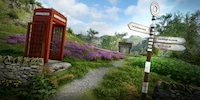
Review
by Philipp Rüegg
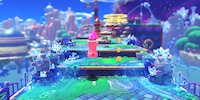
Review
by Kevin Hofer
This is the start of the game, which has various levels to fight through. I say «fight» because you beat almost everything in your path to a pulp. More on that shortly. Every 100 levels, there’s one that – while extensive – is self-contained. There’s huge variety for a game that takes place entirely underground. You find yourself on beaches, in jungles and on snow-capped mountains. The scenery’s beautiful. However, a few blows expose the stones beneath the surface, reminding you that you’re still underground.
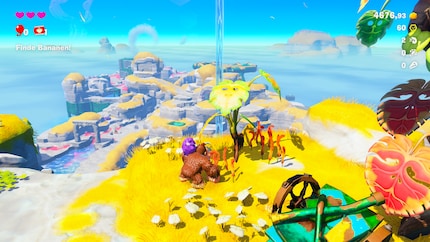
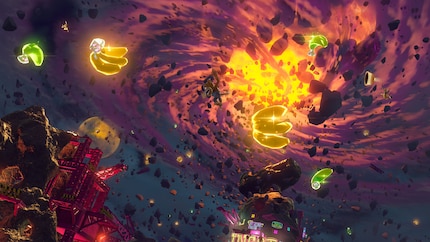
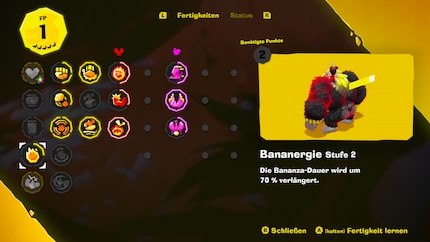
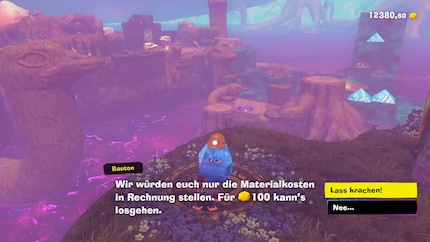
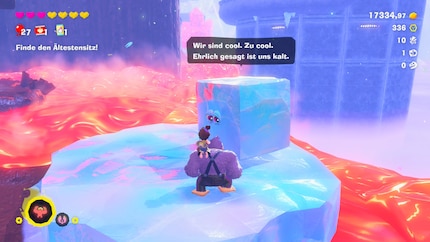
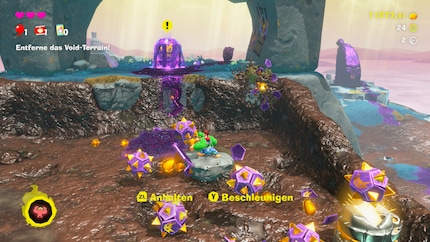
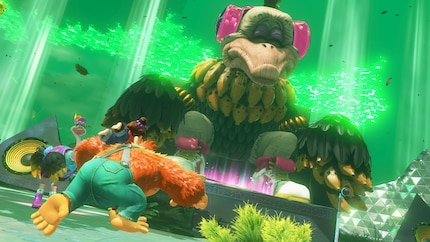
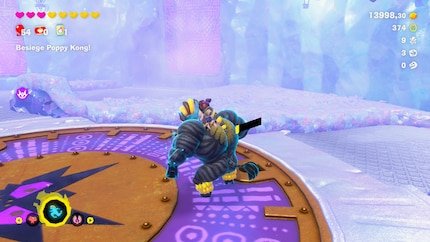
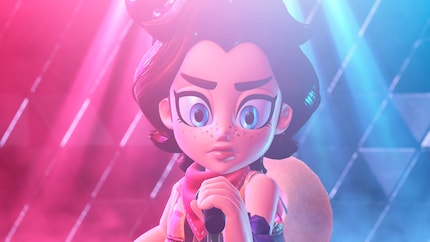
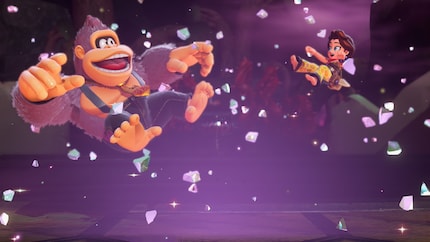
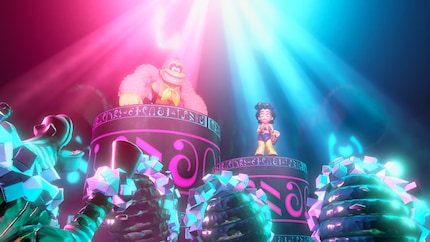
The game’s design impresses at every turn – not just in terms of sound and levels. In my first few hours with Donkey Kong Bananza, the game guided me enough to keep me focused on a goal and not feel overwhelmed – and without boring me with hours of tutorials. My recent review of the 3D platformer Ruffy and the Riverside lamented the opposite experience. At first, the open game world overwhelmed me, and it bored me by the end. That’s why I really commend Bananza and Nintendo on their excellent game design.
